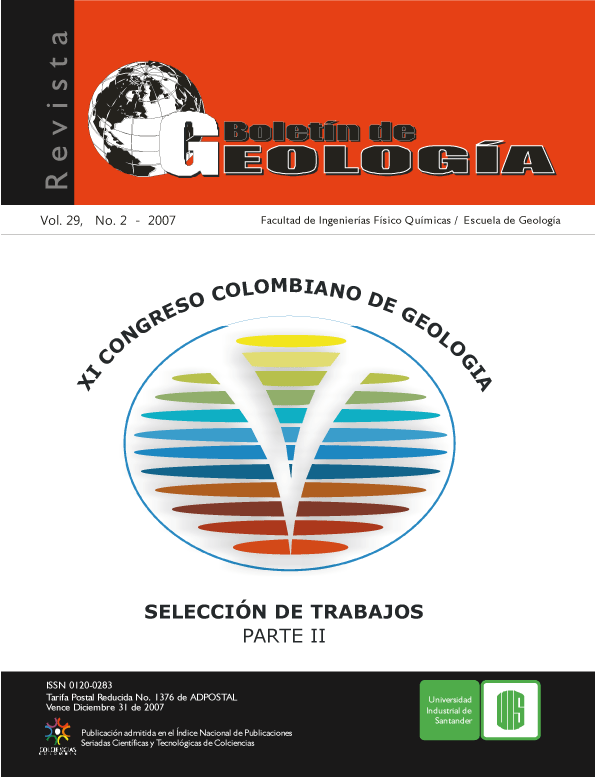SUPERPOSED MESOSCOPIC FOLDS IN THE BUENAVISTA ANTICLINE, COLOMBIAN LLANOS FOOTHILLS.
How to Cite
Abstract
The structural evolution of the Llanos foothills, Eastern Cordillera of Colombia, involves the reactivation of deep-seated faults, the origin of which has to be sought for in Late Paleozoic and Early Cretaceous rift events. These faults are blind and refer to major, E-vergent anticlines which make up the eastern deformation front of this mountain chain. Their ge-ometry can be simulated using the "tri-shear" model. For our study area we perform a structural analysis at map scale by the contouring of the basement-cover interface and compare observations at outcrop scale. Both scales display N-S and E-W trending folds. E-W trending folds have not been reported so far from the Eastern Cordillera and, discussing their origin, we evoke three hypotheses: 1) a regional N-S contraction; 2) their formation in a relay zone during a sinistral fault reactivation; and 3), local down-slope mass movements on the fanks of a major E-W trending structural high.
Key Words: Blind faults, fault reactivation, superposed folds, oblique contraction, Llanos foothills of Colombia.
Downloads
References
Dorado, J. (1990). Contribución al conocimiento estratigrá-fico de la Formación Brechas de Buenavista (límite Jurásico-Cretácico), región noreste de Villavicencio (Meta). Geología Colombiana, No. 17, pp. 7-39.
